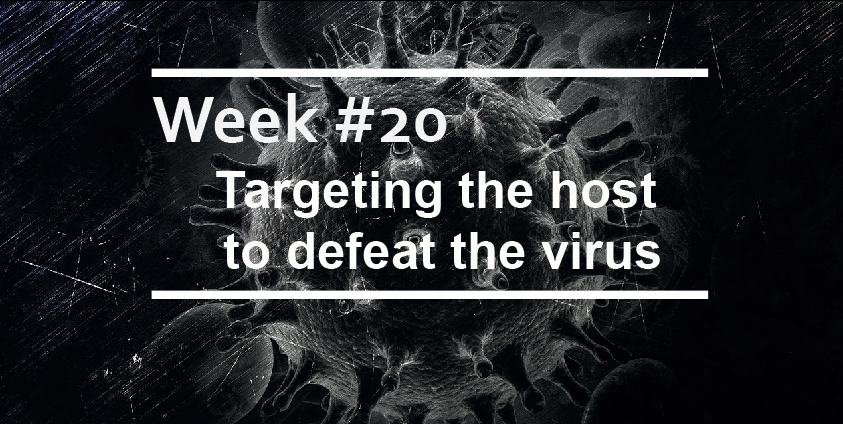Targeting the host to defeat the virus
Amongst the various viruses that can cause flu- and cold-like illnesses, rhinoviruses are the most common. Picornaviridae Rhinoviruses (RV) are a family of single-stranded RNA viruses. More than 100 distinct RV serotypes have been identified, mostly defined by variations in the viral capsid proteins. Although most rhinovirus infections result in relatively mild symptoms (e.g., runny nose, sore throat, and mild fever), rhinovirus can also cause serious complications in patients with pre-existing respiratory diseases, such as asthma, COPD, and cystic fibrosis.
Despite the importance of these viruses in respiratory diseases, no specific treatments are available. This absence of treatment is because the large sereotypic diversity among rhinoviruses prevents the development of effective vaccines, while the high replication/mutation rate of these viruses rapidly overcomes antiviral agents. Therefore, other than symptomatic medication, there are no treatments for RV infections.
Given the difficulty of directly targeting these viruses, a more effective strategy might be to target host molecules that interfere with cellular factors involved in the viral life cycle. Indeed, the detailed characterization of the molecular mechanisms underlying the RV life cycle and infection has enabled Mousnier and Bell et al. (2018) to develop a novel class of inhibitors that target the host’s myrostilation step, which is necessary for RV assembly and replication. Blocking this step leads to complete suppression of RV infectivity and is widely efficacious across multiple RV strains, without impacting host cell viability.
How Rhinovirus hijack cell’s machinery
Upon entry into the cell by receptor-mediated endocytosis, viral RNA is released into the cytosol and translated into a single polyprotein from an internal ribosome entry site (IRES). This large polyprotein is processed by the viral proteinases to form structural capsid proteins (VP1, VP0, VP3) and the non-structural proteins required for virus replication. The cleavage of VP0 into VP2 and VP4 represents the final maturation step necessary for the formation of infectious virions. We know that viruses are good at reprogramming the host cellular machinery during infection to transform the entire cell into an efficient, centralized factory to produce hundreds of new viruses. One of the fundamental steps in RV capsid assembly and infectivity relies on the N-myristoylation of the viral protein VP0, a step that is carried out by the host cell enzyme N-myristoyltransferase (NMT).
How can NMT become an indirect target for the development of anti RV drugs
Following a high-throughput compound screen against NMT in a human malaria parasite, Mousnier and Bell et al. identified a candidate fragment-like compound, IMP-72, which they used as a starting point for the development of a more effective molecule able to inhibit both NMT1 and NMT2 enzymes present in humans. The authors went through a process that they describe as an “unusual fragment reconstruction approach,” where they combined fragment-like compounds with “cooperative inhibitory effects and complementary binding modes” to generate a final exceptionally potent human NMTs inhibitor called IMP-1088. Indeed, the impact of IMP-1088 on RV infectivity was superb!
IMP-1088, the super fragment-like inhibitor
IMP-1088 was able to specifically inhibit RV capsid myristoylation and, consequently, showed strong antiviral activity against a range of rhinovirus serotypes. Production of viral RNA and translation of RV polyprotein were still taking place inside the cell, further indicating the ability of IMP-1088 to selectively block virus assembly by interfering somewhere between protein translation and the production of infectious virions. Importantly, the use of IMP-1088 did not affect cell viability: the low cytotoxicity found during acute NMT inhibition reflects a slow turnover of NMT substrates, providing a substantial window between antiviral efficacy and host cell toxicity. Also, following IMP-1088 withdrawal, NMT activity recovered rapidly, with no long-term effects on cell viability.
These results identify IMP-1088 as a promising probe for use in in vivo investigations addressing the role of NMT and N-myristoylation in human cells and disease biology.
The fact that the viral life cycle is dependent on the host suggests that we might be able to use this to our advantage, to create drugs that are not overrun by the development of resistance or viral mutations but that are selectively chosen to safely target aspects of the host’s biochemistry that the viruses rely on (at least until the virus finds some way of outsmarting us!).
At VRS we routinely conduct high-throughput and high content screenings, as well as follow up studies on hit compounds that might help you find your next drug! Ask how we can help!




